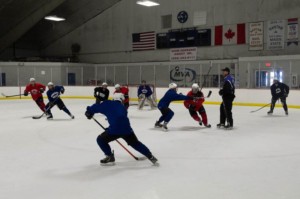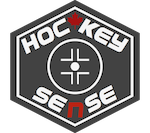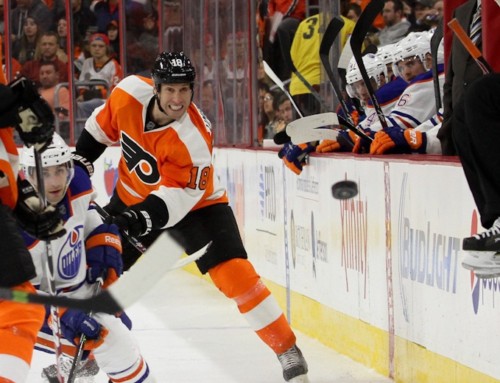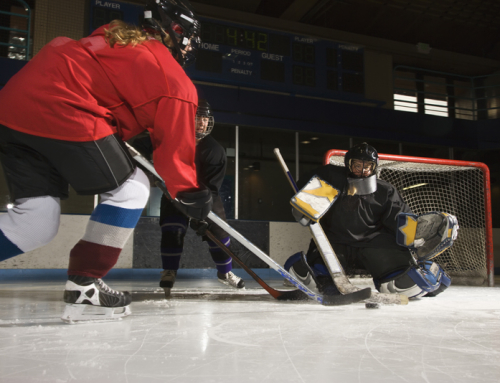 For many families, minor hockey is a 12-month a year endeavour. Despite the fact that the science tells us playing a single sport year round is detrimental to our child’s development, we feel that just to have a chance to play at a competitive level, we can’t let our kid take a couple of months off after the season comes to an end in the spring.
For many families, minor hockey is a 12-month a year endeavour. Despite the fact that the science tells us playing a single sport year round is detrimental to our child’s development, we feel that just to have a chance to play at a competitive level, we can’t let our kid take a couple of months off after the season comes to an end in the spring.
Knowing that kids will be playing hockey year round, how can we best avoid the pitfalls of this type of training schedule (e.g., injuries, dropping out)?
Coach & Parent Awareness
As a parent or coach, you are the child’s advocate. You need to be keeping a keen eye out for any sign of staleness in your young athlete. Staleness is when an athlete has difficulty maintaining their regular training regimen and fails to perform up to previous levels of achievement. Sometimes this can just show up as a bit of a slump and the athlete finds their way out of it after a bit of time. However, this staleness, if left unchecked, can develop into much larger problems.
Staleness is a precursor to burnout. Unfortunately if you don’t notice that your young athlete is getting stale, you can easily find them emotionally, psychologically, and physically, 100% totally drained. For many minor hockey players this leads them to quit playing hockey; permanently. The good news is that if detected early enough, you can take steps to help your athlete avoid experiencing prolonged staleness and burnout.
What follows is a list of warning signs and symptoms that are characteristic of staleness and burnout in athletes. Take a careful read. This list is important to know.
| Sleep Disturbances | Loss of Self-Confidence |
| Drowsiness | Emotional & Motivational Imbalance |
| Quarrelsomeness | Irritability |
| Apathy | Prolonged Excessive Weariness |
| Lack of Appetite | Fatigue |
| Depression | Anxiety |
| Anger/Hostility | Confusion |
There’s quite a number of scary things in that list. Hopefully, you aren’t able to say “That’s my kid!” to too many of them. If you do notice that several of these staleness signs and symptoms apply to your young player and they’ve experienced them consistently over an extended period of time (e.g., 3-4 weeks), it should definitely be brought to the attention of the coach/parents and possibly your primary health care provider.
Staleness Risk Factors (RF)
Now, an ounce of prevention is always worth a pound of cure so even if you don’t think your athlete is at risk of staleness, you should still be aware of some of the underlying risk factors. Once you get this down, you’ll be able to start planning and problem solving so you can help your young hockey player avoid heading down the path to burnout.
RF1 – Long Training & Competitive Seasons
Longer seasons (This is us!) increase the risk of experiencing staleness.
RF2 – Monotony of Training
Variety is the spice of life and it also keeps you fresh, motivated, and excited to put in the work necessary at practice. Mix up how and what you train. Sometimes something as simple as changing when during the day you train can help break things up.
RF3 – Lack of Positive Reinforcement
Coaches and parents are great at pointing out what’s wrong. The kids are pretty good at that too. Focus on rewarding the good things we see and stop punishing the bad things. Too much negativity from coaches and parents won’t make your player any better. It’ll just make them afraid to make a mistake!
RF4 – Abusiveness from Authority Figures
This seems like common sense but it’s surprising how many athletes (and by extension, their parents) will put up with abusive behaviour from a coach because they feel they have to “learn from the best” if they want to keep up. The sad thing is that in the end, this type of experience does more to demoralize and demotivate than to inspire.
RF5 – High Levels of Competitive Stress
Here in Southern Ontario, we really have a strong focus on playing competitive games. It’s not unusual for a team of 9 year olds to play more than 60 games in a season. Considering that lots of these games come in the form of elimination games (Lose and you’re done – tournaments, play-offs), it’s not hard to see that we put tons of competitive stress on our young athletes. Be aware that as adults we have developed coping skills to deal with this pressure. Most kids don’t have these skills. Over time, without proper rest, the stress will wear them down. Sometimes to reach a higher level of performance, your hockey player will need to take a break.
RF6 – Perceived Low Accomplishment
As adults, we like to say minor hockey “isn’t about the wins and losses”, but success is such an important factor for anyone learning something new. This is especially true for kids. Playing hockey requires an amazing set of complex skills that takes years and years to develop. If we want our kids to develop a love for this great game, they have to feel like they can succeed. As coaches and parents we can help by not focussing so much on outcomes and more on the learning process. However that’s a challenge when 60 times a year (at least) we broadcast the game outcomes across the Internet and have massive scoreboards that everyone in the rink can see how our team and our players measure up.
 I know we all want our kids to be successful and that we will do pretty much whatever it takes to give them the opportunity to go as far in hockey as they possibly can. The best path to this goal is not intuitive and “common sense” will not get us there. Sometimes, the road to hell is paved with good intentions.
I know we all want our kids to be successful and that we will do pretty much whatever it takes to give them the opportunity to go as far in hockey as they possibly can. The best path to this goal is not intuitive and “common sense” will not get us there. Sometimes, the road to hell is paved with good intentions.
I hope that this information will help you negotiate some of the challenges that you will face as a coach or parent (or both). Hockey is a great game and it’s at its best when the kids are having fun.
Yours in Hockey;
John







Leave A Comment